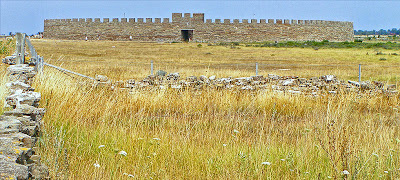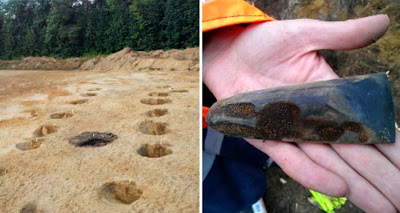It is a sad commentary indeed that a group of anti-government
terrorists have, in two years brought shame on a global leader like
America because they cannot accept…

Any nation’s population needs to have confidence that the people they
elect to represent their best interests in government are indeed
representing them in good faith, and that they are diligent in keeping
the government operational. Americans have not been afforded that
confidence for over four-and-a-half years because repugicans made it
their raison d’être to obstruct and keep government impotent and unable
to serve the population’s best interests. Indeed, it is an incredibly
worrisome time in America and the unsettled state of government is
rightly a legitimate concern that governance is fundamentally dead due
to repugican anti-government machinations. However, as apprehensive as
the American people are that Republicans brought the federal government
to its knees out of spite, the rest of the world is watching and waiting
for America to fail as a result of the repugican coup d’état to topple
the government.
There is a palpable sense of disquiet among world leaders watching repugicans shutdown and befuddle the United States government’s ability
to operate because they could not tolerate 30 million Americans having
access to affordable healthcare insurance. In fact, most people around
the world seriously cannot comprehend the inhumanity of repugicans and
their funding machines spending hundreds-of-millions of dollars and
shutting down the government to prevent Americans from having health
insurance, and the sad joke is that they claim it is what makes America
“exceptional” if exceptional means being barbaric. The real concern
among world leaders, though, is that repugicans unilaterally shut down
the government and threaten (again) to default on the nation’s sovereign
debt and plunge the world’s financial system into a depression.
In global capitals around the world, leaders are saying “
At the
moment, Washington is fighting over the budget and nobody knows if the
country will still be solvent in three weeks. What is clear, though, is
that America is already politically bankrupt.” Like S&P noted in
2011 when they downgraded America’s credit rating, world leaders
recognize that repugicans are responsible for the “
paralysis of the American government, where a rump in Congress is holding the whole place to ransom that doesn’t really jibe with the notion of the United States as a global leader” according to Michael McKinley, an expert on global relations at the Australian National University.
The embarrassment America is feeling at being a global laughingstock
was best summed up by Secretary of State John Kerry who told world
leaders at the APEC meeting “
When we get this moment of political
silliness behind us, we will get back on a track the world will respect
and want to be part of.” However, it is unlikely that any nation in
the world will ever respect a country, or a population, that allowed a
political cabal to stage a coup d’état, shut down the government, and
threaten a debt default because they refuse to accept the results of a
presidential election, the democratic process that passed a healthcare
law, and a Supreme Court ruling that the Constitutional process that
enacted the health law was followed to the letter.
Now that President Obama had to cancel plans to travel to the Asia
Pacific Economic Cooperation Forum in Bali and the East Asia Summit in
Brunei, world leaders’ concerns about America’s relevance in global
politics will only get worse. The President had to cancel the trip
because he had to deal with repugican terrorists who shut down the
government and threaten to block a borrowing limit that will lead to an
American credit default and initiate a financial crisis worse than the repugican-led crash in 2008. On Saturday, President Obama tried to
reassure Americans, and world leaders, that the government could reopen
very quickly because there are sufficient repugican and Democratic
votes to pass a clean, and very austere, bill to fund the government,
but Speaker of the House John Boehner will not allow a vote unless repugicans extract ransom demands to abolish the constitutional process
for passing legislation into law.
President Obama also sought to assuage fears that America will cause a
worldwide economic catastrophe by reassuring the world that America has
never failed to pay its bills and reiterated that he is not going to
negotiate with repugican terrorists over whether they do their jobs and
pay the debts they incurred for shrub’s two wars, tax cuts for the rich,
and legislation giving subsidies to corporations, the oil industry, and
the religious community. The President did attempt to reassure the
world that until 2011, no political cabal in American history ever
threatened to force the nation to default on its debt or hold it hostage
to gain leverage to impose their agenda on the nation. It is a sad
commentary that the President of the United States had to tell the world
that America cannot allow repugicans in one house of Congress to
threaten economic collapse unless they are allowed to impose their
agenda on the nation.
It is highly likely that world leaders are convinced that, like
S&P, repugicans will not change their ways and will continue making
“
American governance and policymaking less stable, less effective, and less predictable.” Like world leaders are saying, America is a “
nation
where a rump in Congress is holding the whole place to ransom that
doesn’t really jibe with the notion of the United States as a global
leader,” and while the world laughs at America’s repugican dysfunction, they are frightened the “
rump in Congress” will cause a financial collapse the entire world economy will suffer.
It is a sad commentary indeed that a group of anti-government
terrorists have, in two years brought shame on a global leader like
America because they cannot accept the results of an election or a
legally passed law that does nothing more than give 30 million Americans
access to affordable healthcare insurance. In fact, America’s
reputation around the world is suffering another repugican disgrace in
advancing the NRA’s agenda of gun proliferation that led foreign nations
to issue travel warnings to America because of the certainty they are
15 times more likely to be shot dead in the USA than any other country.
Former Australian deputy Prime Minister issued the warning “
because
anyone can buy a firearm without a background check that is one of the
most dumbest decisions so far in the litany of agony over the gun laws
and gun policies of the NRA and the USA.”
It is tragic that after eight years of the shrub warmongering and a global
financial collapse, the world began respecting American again with a
President who brought financial stability to America just to be mocked,
disrespected, and frightened by the same repugicans threatening to
repeat the 2008 financial collapse. It is telling that America’s
Secretary of State and President had to reassure the world that the
“political silliness” of a government shutdown and credit default threat
is the result of extortionists in the repugican cabal attempting to
impose their agenda on the nation. The world knows why the government is
shut down and why a credit default is a very real threat with repugican criminals attempting to force, by extortion, their agenda on
the nation. The world fully comprehends that if a cabal of racists and
libertarian terrorists can bring down the greatest, richest nation in
the world by easily shutting down the federal government and taking the
economy hostage, that nation cannot be trusted to be a global leader.



























